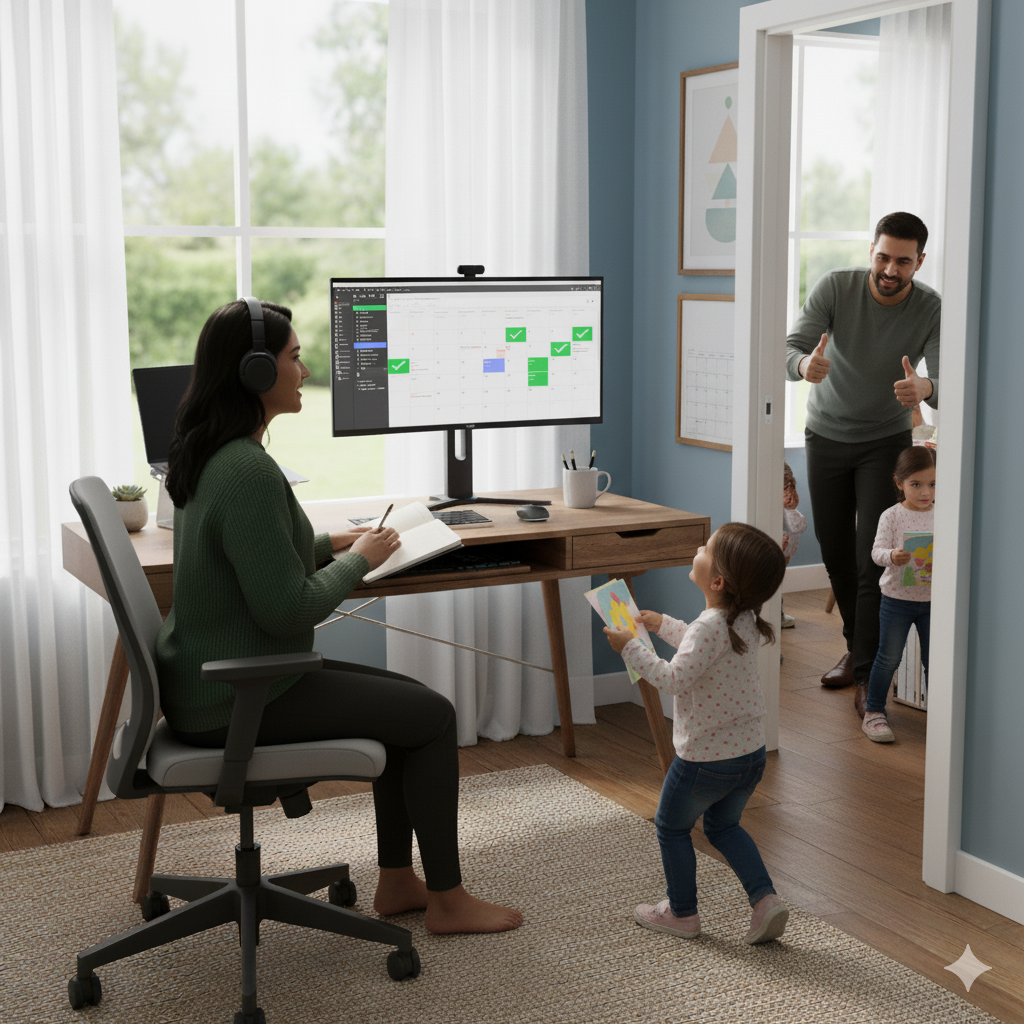Introduction
Remote work has transformed the way we think about jobs, productivity, and lifestyle. While it offers flexibility and freedom, it also brings unique challenges that many professionals did not anticipate. Among these challenges, the biggest one remains how to stay motivated in a work-from-home setup.
At first, the comfort of working in pajamas or avoiding daily commutes feels like a dream. But over time, the blurred boundaries between work and home can drain energy and motivation. Without office routines, casual conversations, or direct accountability, staying driven requires a conscious effort. Motivation is more than just willpower; it’s about designing an environment, mindset, and daily system that keeps you inspired and productive.
In this blog, we’ll explore strategies that help professionals remain motivated while working remotely. From routines and environments to tools, well-being, and human connection, we’ll break down what it takes to thrive in a work-from-home lifestyle.
You can read the summary of this article here.
How to Stay Motivated in a Work-from-Home Setup with Routines
The Importance of Structure
Working from home often eliminates the natural structure of office life. Without commuting, scheduled breaks, or in-person meetings, days can quickly blend. This lack of rhythm makes it harder to maintain focus and motivation. The solution is to create a personalized structure that suits your lifestyle.
Morning Rituals as a Launchpad
Morning rituals give your day a strong start. Whether it’s a short workout, journaling, or simply setting your top priorities for the day, these actions signal your brain to shift into work mode. Professionals who dedicate the first hour of their morning to meaningful tasks often experience a sense of progress before distractions appear.
Setting Boundaries with Work Hours
One of the simplest yet most powerful strategies is setting defined work hours. When you know exactly when the workday starts and ends, you prevent burnout and avoid procrastination. These boundaries also help separate professional life from personal responsibilities, a key factor in long-term motivation.
Creating an Inspiring Workspace
Why Environment Shapes Motivation
Your surroundings can either fuel or drain your energy. A cluttered or distracting space makes it difficult to stay motivated. In contrast, a clean, well-designed workspace communicates focus and intention. This doesn’t always mean a full home office; even a quiet desk corner can become your productivity hub.
Personal Touches for Inspiration
Adding small elements like plants, calming colors, or motivational quotes can make your workspace more inviting. Research shows that natural light boosts mood and focus, so positioning your desk near a window is an easy productivity hack. Comfort also matters; an ergonomic chair or standing desk setup can reduce fatigue and keep you energized.
Minimizing Distractions Around You
Staying motivated is impossible when distractions constantly break your flow. Turning off non-essential notifications, placing your phone out of reach, or using noise-canceling headphones are simple yet effective ways to create a focus-friendly environment. The fewer interruptions you face, the stronger your motivation remains throughout the day.
Tools and Techniques That Boost Motivation
Digital Tools for Accountability
Remote work doesn’t mean working in isolation from systems. Productivity tools like Trello, Notion, or Asana provide visual reminders of progress. Checking off tasks creates a psychological sense of achievement, which is a powerful motivator.
Time Management Methods
Techniques such as time-blocking and the Pomodoro Technique are proven to help sustain motivation. Time-blocking ensures that important tasks receive undivided attention, while Pomodoro cycles of 25 minutes of focus followed by a 5-minute break maintain energy and prevent fatigue.
Celebrating Small Wins
Motivation grows when progress feels tangible. Professionals who acknowledge small victories, such as completing a report or sticking to their schedule, create positive momentum. This momentum fuels bigger accomplishments and helps remote workers feel consistently engaged.
Balancing Mental Health and Human Connection
The Link Between Well-Being and Motivation
Working from home can sometimes lead to feelings of isolation. Without regular human interaction, motivation can waver. That’s why prioritizing mental health is crucial. Activities like meditation, daily walks, or short breaks for stretching improve mood and concentration.
Staying Connected with Colleagues
Motivation also comes from a sense of belonging. Regular video calls, informal chats, or team-building activities recreate the social aspects of office culture. These interactions remind you that you’re part of a bigger mission, not working alone in a silo.
Creating Work-Life Balance
Balance is key to long-term motivation. Overworking from home often leads to burnout, while neglecting responsibilities reduces drive. Setting boundaries, planning personal activities, and taking proper time off ensure that motivation is sustainable. When both professional and personal needs are met, energy levels remain high.
Conclusion
Learning how to stay motivated in a work-from-home setup is about more than discipline. It’s about creating systems, environments, and habits that keep you engaged. Structured routines provide stability, inspiring workspaces spark creativity, tools make progress visible, and self-care sustains energy. Combined, these strategies create a remote lifestyle where motivation thrives naturally.
The future of work is remote-friendly, and those who master motivation will not only be productive but also fulfilled. By building conscious habits and nurturing balance, professionals can unlock the full potential of remote work and enjoy both career growth and personal well-being.
Find Your Dream Job Today Explore Endless Career Opportunities and Secure Your Next Role with Best Job Tool







Leave a Reply